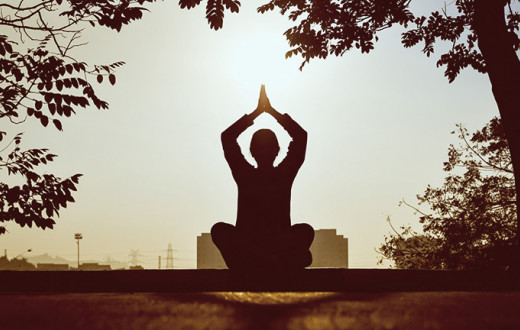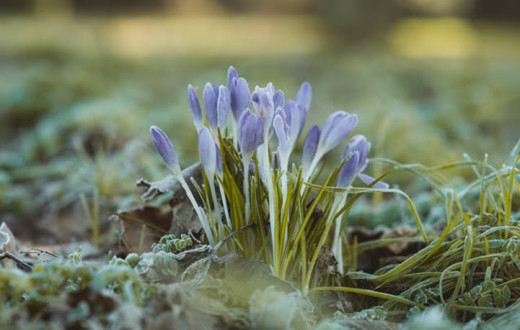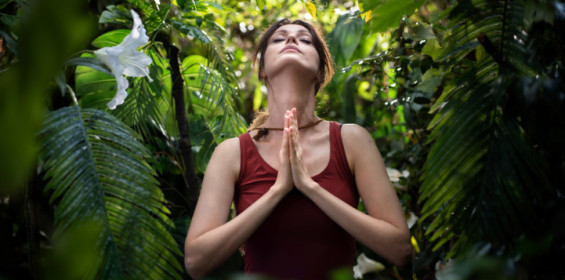The purpose in life is to understand who we really are and fully blossom in love. As human beings, we go through several phases in this journey of life - childhood, education, youth, professional life, marriage, parenthood etc. Almost all cultures and traditions mark and celebrate these stages in the journey of life. Our ancient Vedic tradition identifies sixteen such important events to be marked and celebrated in one’s life - these are called Shodasha Samskrārās.
Samskārās literally mean “impression” and also “to refine or purify”. Life is celebration. Celebration brings everyone together, creates enthusiasm, uplifts the spirit, brings joy and harmony in the society. Samskrārās in the Vedic tradition are celebrated by specific ceremonies which involve rituals, Homās, chanting of mantras, use of specific herbs, fruits, flowers, grains etc., obtaining blessings of elders and family. The Samskārā ceremonies bring positive impressions in the mind, bring fulfillment, success and harmony in every stage of life. Samskārās strengthen the individual, protect the body and mind. The Shodasha Samskārās also have deeper spiritual significance and are best performed by qualified pandits under the guidance of a spiritual master.
Shodasha Samskārās identifies Samskārās - rituals that begin before the birth of the individual and continue till the end of the lifespan. The Samskārās are based on ancient texts - Manu Smriti and Grihya Sutrās. A brief introduction to each of the Samskārās is presented here.
Garbhādhāna
Garbhādhāna literally means “gifting the womb”. This Samskārā is done after the couple is united in holy matrimony. This Samskārā is performed to bring love and harmony between the newlyweds. The husband and wife resolve to treat each other equally with love and mutual respect. The husband honors his new bride as Goddess Lakshmi incarnate. This Samskārā aims to cultivate good conduct, right thinking and living habits. The couple prays to the Divine to bless them with bright, intelligent and beautiful children.
Pumsavana
Children are a gift and bring great joy into our lives. Pumsavana Samskrāra is usually conducted in the third month of pregnancy. This Samskārā is performed to beget a good child.
Seemanthonnayana
Seemathonnayana is usually performed in the fifth or seventh month of pregnancy. This is similar to baby shower. This ceremony is performed for the health and long life of the mother and the child in the womb of the mother. The vibrations of the mother and surrounding atmosphere are said to influence the child in the womb. There are many stories in the Purānās and Ithihāsa that illustrate this. During this period, it is good for the pregnant woman to be happy, contented and peaceful.Typically relatives pamper the pregnant woman with gifts of sweets, savories and bangles.
Jātakarma
Jātakarma is performed to welcome the newborn child into the world reminding it of its divine nature on this journey of life. The baby is first bathed and cleaned and then fed a small mixture of honey, ghee and gold by the father. The father also whispers a mantra in the child’s right ear reminding it of its divine nature. This Samskārā also seeks the blessings of intelligence, health and long life for the child.
Nāmakarana
Our name is an important part of the identity in this word. In the Vedic tradition names are chosen carefully based on several factors. Nāmakarana is an ancient Vedic ceremony for naming the child and is usually performed on 11th day after birth with poojās, chanting and singing. Five names are chosen for the child – based on the birth star of the child (nakshatranāma), the birth month (māsanāma), family deity (Kuladevata Nāma), popular name (loukika nāma) through which the child is known, and name based on grandparents of the child. All relatives and friends bless the child with long life, intelligence and good life. There is a feast at the end of the Nāmakarana ceremony.
Karnavedha
Wearing earrings is a common practice in many ancient cultures. The ear lobes have an important acupressure point. Neurologists in the west have done research linking the earlobes to two hemispheres of the brain.
Piercing ears is believed to help in developing intelligence and enhancing immunity against respiratory infections. Often in India when prostrating to Lord Ganesha, we gently tug at our ear lobes while doing sit-ups. This ancient practice is now being taught as a very popular yoga technique in the west to enhance intelligence and awareness in children.
Nishkramana
Impressions in the child’s mind are formed based on what we see and hear in this world. Nishkramana is the first outing of the child where it is shown good and auspicious symbols. This is usually done after the first month the child is born. The child is taken for a visit to the temple and shown the moon at night.
Annaprāshana
There is a popular saying in Hindi that says “jaisa ann vaisa mann” which means as “as is the food, so is the mind”. The food we eat nourishes us physically and also affects our mind.
Annaprāshana is an important ceremony performed in the sixth month. The child is fed solid food for the first time. This ceremony is done to bring good health, radiance and physical strength in the child. Relatives and friends are invited to a feast specially prepared for the occasion.
Vidyārambha
Good education is a vital aspect in a child’s life. Every parent wants to see their children excel in studies and do well in all activities. Vidya means knowledge and ārambha is beginning.
In the Vedic tradition, Saraswati is the goddess of learning and knowledge. In the Vidyārambha ceremony Saraswati Pooja is performed to seek the blessings for the child. The child sits on the father’s lap and writes “” the primordial sound in a plate filled with rice grains. Subsequently the child is introduced to the world of alphabets. The child is then made to gift books and pens to other children. This cultivates generosity and the value of sharing in the child.
Chudākarma
Our hair on the head is often called the crowning glory. It gives us protection from the elements and enhances beauty. Chudākarma or Mundana is the Samskārā where the child’s hair is cut for the first time. The Chudākarma ceremony marks a new phase of life for the child. It symbolizes cleansing, renewal and new growth. It is also said that the new hair that grows is strong and clean. Mantras are chanted as the child is given blessings of long life, prosperity and fame.
Upanayanam
Upanayanam is one of the most important Samskārās in a person’s life. "Upa" means ‘close’ and "Nayana" means ‘to bring’. Upanayana means to bring closer to the Guru or Divine. The Upanayanam ceremony is best done between the ages of six to eight years for boys although many perform it at a later age. It symbolizes spiritual rebirth and moving into the Brahmacharya stage of life. Traditionally Upanayanam was done for women also but was discontinued a few centuries ago due to social conditions.
The child is initiated into the most sacred Gayatri mantra in the Brahmopadesham ceremony. He is taught the Sandhyāvandanam which is to be performed thrice every day. The Gayatri mantra is a prayer to invoke brilliance and purity in our intellect and consciousness. The three threads in the Yagnopaveetam represent the responsibility towards the one self, family and society.
Vedārambha
Vedārambha means ‘beginning of learning Vedas’ and is performed on an auspicious date after the Upnayanam. The Samskārā is elaborate and performed with Yagnās and chanting. This is the day when the child starts studying the Vedas under the Guru. Traditionally in the Guru Shishya Parampara, the student would learn the Vedas living with the Guru as part of his family. In the Vedārambha ceremony, the sacred fire is lit and the student takes a vow to be dedicated to serving his Guru and his family, living a life of discipline and balance with unwavering focus on acquiring knowledge and gaining wisdom.
Keshānta
When a boy grows into his teens he attains maturity. Sprouts of hair appear on his chin and upper lip. The Keshānta Samskārā is performed in the sixteenth year for boys. An auspicious day is selected and worship of Lord Ganesha and family deities performed. With the chanting of mantras the boy’s hair is removed. This marks the transition from boyhood to adulthood. Godāna (gifting a cow) is part of the ceremony where the student gifts a cow to his Guru.
For girls, the ritushuddi ceremony is performed when she attains maturity. The girl also wears a sari for the first time.
Samāvartana
Graduation day when the students graduate from the university is a big and memorable occasion in the life of a student. Samāvartana is the Vedic Samskārā which marks the end of student life and the beginning of a new one. The ceremony symbolizes stepping into a new chapter in life.
The student, established in knowledge and wisdom, shining like a radiant sun seeks the blessings of the Guru to enter a householder’s life. The student offers Guru Dakshina to his Guru.
Vivāha (Marriage)
A wedding is a commitment to care and share with one another as husband and wife. The saptapadi or seven sacred vows are an important part of the wedding ceremony. These vows are guidelines for the couple to have a happy married life. When husband and wife are focused on each other alone, they end up fighting or complaining. However, when they are both focused on a higher goal and move together towards the goal, there is harmony.
Antyeshti (Final rites)
The human body is created from the Panchamahāboothās (the five elements) viz. earth, water, fire, air and ether. The body dissolves into the five elements at the end. The body is perishable but the soul is eternal. In the Bhagavad-Gita, Lord Krishna says "Vāsāmsi jeernāni yathā vihāya navāni grihnāti naroparāni, thatā sareerāni vihāya jeernāni anyāni samyāti navāni dehi"). “Just as a man discards worn out clothes and puts on new clothes, the soul discards worn out bodies and wears new ones.”
Antyeshti is the final Samskārā in the soul’s journey on this earth. In the Vedic tradition, the body cremated accompanied by rituals and chanting of mantras. On the third day, the sons collect the ashes and consecrate them in a holy river. Relatives are free from social obligations for ten days and allowed to be fully mourning the loss. Bhagavad Gita, Vishnusahasranāmam and other sacred texts are chanted during this period. On the eleventh day, there is a purification ceremony and on thirteenth day there is celebration and a feast as the soul has now crossed over and reached its resting place.





























